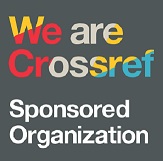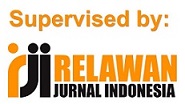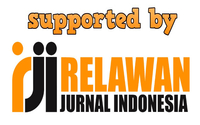SOCIAL AWARENESS IN PRAMOEDYA ANANTA TOER’S NOVEL THIS EARTH OF MANKIND
Abstract
Full Text:
PDFReferences
Azzet, A. M. (2010). Mengembangkan kecerdasan spiritual bagi anak. Yogyakarta, Indonesia: Katahari.
Baron, R. A., & Byrne, D. (2008). Psikologi sosial: Jilid 1 edisi kesepuluh. Jakarta, Indonesia: Penerbit Erlangga.
Franzoi, S. L., Davis, M. H., & Markwiese, B. (1990). A motivational explanation of private self-consciousness differences. Journal of Personality, 58(4), 699-717.
La Abute, E. (2019). Kesadaran sosial dalam pendidikan. Jurnal Pendidikan Glesser, 3(2), 188-199.
Nurgiyantoro, B. (2010). Teori pengkajian fiksi. Yogyakarta, Indonesia: Gadjah Mada University Press.
Prasolova-Forland, E. (2002). Supporting social awareness in education in collaborative virtual environments. Trondheim, Norway: Norwegian University of Science and Technology (NTNU).
Sears, D. O., Freedman, J. L., & Peplau, L. A. (1991). Psikologi sosial (Jilid 2). (M. Adryanto, Penerj.). Jakarta, Indonesia: Erlangga.
Semi, M. A. (1993). Dasar-dasar keterampilan menulis. Bandung, Indonesia: Angkasa.
Sheldon, K. M. (1996). The social awareness inventory: Development and applications. Personality and Social Psychology Bulletin, 22(6), 620-634.
Sheldon, K. M., & Johnson, J. T. (1993). Forms of social awareness: Their frequency and correlates. Personality and Social Psychology Bulletin, 19(3), 320-330.
Suhariyadi. (2014). Pengantar ilmu sastra: Orientasi penelitian sastra. Lamongan, Indonesia: Pustaka Ilalang.
Sujiono, Y. N. (2013). Hakikat pengembangan kognitif. Jakarta, Indonesia: Universitas Terbuka.
Sumardjo, J. (1984). Memahami sastra Indonesia. Bandung, Indonesia: Alumni.
Tim Prima Pena. (2015). Kamus besar bahasa Indonesia. Jakarta, Indonesia: Gita Media Press.
Toer, P. A. (1996). This earth of mankind. New York, NY: Penguin Books.
Wegner, D. M., & Giuliano, T. (1982). Social awareness in story comprehension. Social Cognition, 2(1), 1-17.
Zuriah, N. (2011). Pendidikan moral dan budi pekerti dalam perspektif perubahan: Menggagas platform pendidikan budi pekerti secara kontekstual dan futuristik. Jakarta, Indonesia: Bumi Aksara.
DOI: https://doi.org/10.30743/jol.v7i2.11998
Refbacks
- There are currently no refbacks.
Fakultas Sastra
Universitas Islam Sumatera Utara (UISU)
Jln. Sisingamangaraja Teladan Barat Medan, Indonesia
Phone: +627869911 | e-mail: journal_language@sastra.uisu.ac.id










